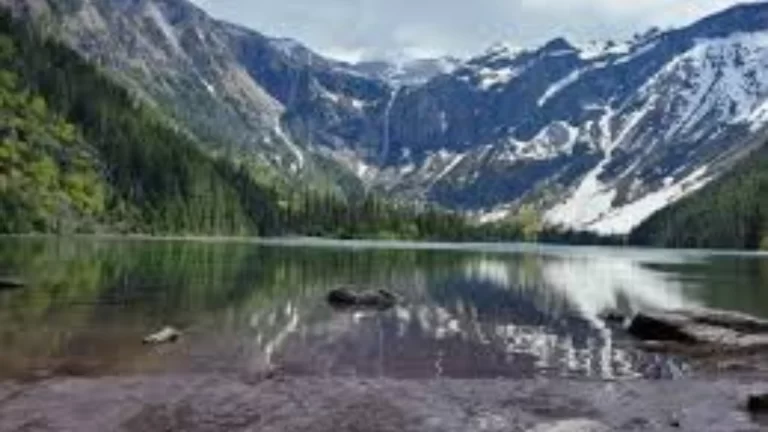Humanity has inhabited this Earth for thousands of years. In the beginning, nature’s forces shaped every aspect of human life. Over time, as science and technology advanced, humans learned to exercise control over these forces. However, even today, there are indigenous tribes such as Eskimo whose lives remain closely influenced by their natural environment. When humans adapt to nature’s rhythms and live in harmony with it, it’s described as environmental adaptation.
Examples of such environmental adaptation can still be observed today. People who have adapted to their environment are commonly found in equatorial regions, polar territories, tropical grasslands, temperate meadows, mountainous areas of the Himalayas, and arid deserts. Notable examples include the Pygmies of Central Africa, the Bushmen of the Kalahari Desert, the Maasai in East Africa’s plateaus, and the Eskimo of the northern polar regions, among others. Here, we delve into the Eskimo, one of the most intriguing tribes to have mastered survival in harsh polar conditions.
Eskimo Tribe (Inuit) – Homeland and Naming
The Eskimo people, often known today as the Inuit, are indigenous to the tundra region. This vast area spans approximately 5 million square kilometers around the Arctic Ocean. The region extends from the Aleutian Islands through Alaska, northern Canada, Greenland, Scandinavia (Norway, Sweden, and Finland), and up to the northern parts of Russia, stretching to the Bering Strait.
Most Eskimos inhabit areas between the 68th and 70th northern latitudes. While in Alaska, Canada, Greenland, and northern Russia, they are known as Eskimos; in Scandinavia, they are called the Lapps, and in Russia, they are referred to as Yakut, Yukaghir, Chukchi, and Samoyeds, among others. The term “Inuit,” meaning “the real people,” was officially adopted during the Inuit Circumpolar Conference held in Barrow, Alaska, in 1977. Historically, “Eskimo” meant “Omophagous,” while “Inuit” conveys the idea of “unchanged people.”
Physical Environmental
Climate
Due to their proximity to the North Pole, Eskimos endure an intense, frigid climate. Their homeland remains covered with ice almost year-round, with minimal precipitation, which mainly falls as snow. Winter extends for nine months, while the brief summer, spring, and autumn last only three months combined. With long, cold seasons, the annual average temperature often stays below zero, and winter lows can plummet to -50°C.
Due to extended darkness during certain months, Eskimos face physiological challenges, sometimes leading to disorders like insomnia, mental distress, and anemia. Some explorers have noted that it’s more bearable to withstand -50°C in calm conditions than -30°C during stormy winds.
Vegetation
During the short summer, when the ice temporarily melts, a sparse yet colorful flora emerges, including mosses, lichens, willows, birch, alder, and wildflowers.
Soil
The perpetual ice cover and lack of vegetation hinder soil development, leaving most of the terrain as bare rock. Where soil does exist, it’s typically thin and unsuitable for agriculture.
Fauna
In this polar habitat, warm-blooded animals like reindeer, caribou, polar bears, musk oxen, polar foxes, and seabirds thrive. Beneath the ice, seals, walruses, and whales are abundant, forming a vital food source for the Eskimo people.






Physical Characteristics of the Eskimo People
Eskimos generally have broad, flat faces, with heights ranging between 150-160 cm. Their complexion is yellowish, eyes are dark brown and slightly slanted, heads are elongated, and hair is coarse and black. They exhibit features typical of the Mongoloid race.
Eskimo Tools and Weaponry
The Eskimo’s primary weapon is the harpoon, typically 4-5 feet long and fashioned from whale bone. Additional tools include knives, axes, bows, and other implements crafted from animal bones. They also use snares made from reindeer sinew to hunt animals. With increased exposure to modern society, firearms have also been adopted by some Eskimos.

Eskimo Diet
The term “Eskimo” historically translates to “raw meat eaters,” and indeed, their diet is predominantly carnivorous. They rely mainly on the meat of seals, walruses, reindeer, and caribou, preferring raw meat but occasionally cooking it by boiling, roasting, or drying. Hunting is essential for their survival, and in times of scarcity, they may go days without food. In extreme cases, they resort to consuming their domesticated animals like dogs and reindeer.
Eskimo Clothing
To protect themselves from the severe cold, Eskimos craft garments from the skins of seals, reindeer, caribou, and polar bears. Animal bones serve as needles, and sinew threads are used to sew these clothes. Men’s clothing includes a jersey called a “timiyak” and an additional layer known as an “ornak.” They wear fur-lined hats and “komik,” boots crafted from seal skin. Women’s garments, known as “umiak,” differ slightly from men’s attire.
Eskimo Shelter
Summer Shelter: During the brief summer, Eskimos live in tents crafted from seal skins, known as “supiks” or camps. These tents, however, are destroyed by snow storms during the winter.
Winter Shelter (Igloo): In winter, Eskimos reside in igloos, dome-shaped structures made from large blocks of ice cut with bone knives. An igloo’s typical diameter is 4 meters, with a height of about 3 meters. The entrance is just half a meter in height, requiring one to crawl inside. Seal skin linings cover the interior walls, and warmth is maintained by burning blubber, while a small vent in the roof prevents the igloo from melting from excess heat.


Eskimo Occupation and Economy
Hunting and trading are the main economic activities of the Eskimo people. During the brief summer, they hunt animals to gather food, clothing, and materials for shelter. In winter, they trade in furs. Among all hunting tribes, Eskimos are considered exceptional hunters, targeting reindeer, caribou, polar bears, and musk oxen.
Their hunting methods vary with the season:
- Maupok Method: During winter, Eskimos hunt seals through breathing holes in the ice. Dogs help locate these holes, where a harpoon is used to capture the seal as it surfaces for air.
- Utok Method: In spring, Eskimos approach seal herds basking on shorelines, attacking them with harpoons.
- Etuarpok Method: Using two holes, one as a lure and the other as an ambush, Eskimos capture seals with harpoons.
Besides harpoons, light spears help them hunt ducks and geese, and fish are captured using nets or bags.
Transportation Methods in the Eskimo Community
Sledge: In winter, Eskimos use sledges, wheel-less carts made from whale bones or wood, pulled by teams of dogs across icy terrain.
Kayak: During summer, Eskimos use kayaks, sleek boats built from whale bones or wood, covered in seal skin. Kayaks are primarily used for hunting at sea.
Umiak: In Alaska and Greenland, Eskimos employ umiaks, broad boats lined with animal skins, for whale hunting.



Social and Cultural Aspects of Eskimo Life
Eskimo society is patriarchal, with the eldest male assuming leadership, directing family hunting and housing decisions, and presiding over rituals. A shaman, highly revered, holds significant influence. Interpersonal conflicts are rare; theft and robbery are foreign concepts, while witchcraft, social mingling, and even murder are considered minor offenses.
Eskimos place a unique emphasis on preserving limited resources. In times of food scarcity, elders sometimes choose to walk out onto the ice to reduce the family burden, ensuring sustenance for younger members. Such practices reflect their ethos, viewing this sacrifice as a justified, culturally accepted form of survival.
On a cultural level, Eskimos are rather traditional, often foregoing regular bathing and wearing clothes until they’re worn through. They believe in spirits and worship a deity called Vedana, residing beneath the ocean, who governs marine creatures and holds great significance in their lives.




























